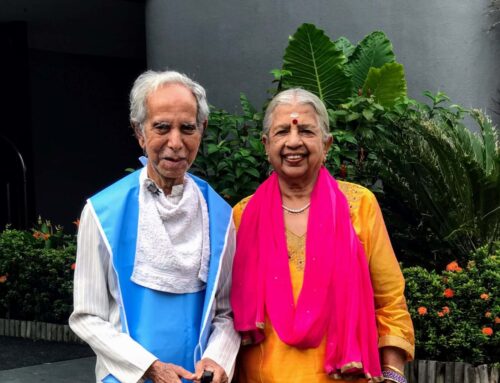Came upon this concept in an interesting way. Thank you, Ms. Anjana (kathak teacher) for the idea.
Practice makes perfect in classical Indian dance classes
Shoba Narayan
October 1, 2013 Updated: October 1, 2013 17:27:00
Save this article
Alaa Ahmed is an assistant professor in the department of integrative physiology in the University of Colorado in Boulder. I heard about him in a very unusual way.
My daughter, Ranjini, learns kathak – a classical Indian dance form that has it roots in the nomadic bards of north India – at an advanced level. She is part of a dance company and goes to dance classes four times a week.
A common complaint among dance students is the long hours of repetitive practice they have to put in.
Recently, Ranjini’s dance teacher, guru Anjana Gupta (we refer to teachers as guru in India), sent out an email attempting to answer the question: why practise a dance movement after you have perfected it? In the email, the dance teacher cited a study conducted by Professor Ahmed and her colleagues that was recently published in the Journal of Neuroscience.
The study made a case for “overlearning” or repetitive practice that has far-reaching implications in any field of physical endeavour such as tennis, acrobatics, and yes, classical Indian dance.
When we learn a new physical movement or dance form, Prof Ahmed says that the brain comes up with a “sensorimotor map” that gets refined with repetition.
In the beginning, the new task triggers different neural networks and muscle clusters. With practice, the body learns to eliminate wasteful movements that deplete our mental and physical energy until we perfect the move.
But perfection, says the study, is not enough. The best students will overlearn, or continue practice even after what seems to be perfection. It was during this phase when participants reported that “nothing was happening” since they had learnt the movement, that Prof Ahmed noted the greatest reduction in energy expended by the body.
In other words, when the learner thinks that she is doing rote movements, be it a tennis serve or a dance rhythm, her mind may believe that nothing is happening but her body records a reduction in metabolic energy.
This is called overlearning and it is a key concept for a performer to go from good to great.
During this overlearning phase, when the body is operating on cruise control, the mind and its intuition kicks in and initiates tiny changes that make a performance sing.
Since the body’s energy is freed up for other things, it will allow physical athletes and performers to focus on say, anticipating your opponent’s tennis move or playing the violin with more passion, or holding a dance pose for a moment longer to stay in tune with the live orchestra or musicians. This is intuition and grace. It kicks in when you overlearn your movements and this is particularly true in the case of Indian classical dance, which is all about emotion and timing.
From the 16th century onwards, kathak flourished in the Mughal courts.
Today, kathak is one of the eight classical Indian dance forms that include bharatanatyam, kathak, odissi, kuchipudi, kathakali, mohiniyattam, Manipuri and sattriya. Kathak has its roots in the word “katha” which means story.
Many of the dances convey emotions of love, loss, waiting and the playful anger that marks a relationship. It is a supremely graceful dance form that mixes the whirling movements of dervishes with the upright graceful arcs of ballet.
The only problem is that it involves punishing hours of practice for the beginner. Many of the movements are rote bends and squats, swirls and taps that are painful to watch, let alone justify.
In citing Prof Ahmed’s study, my daughter’s dance teacher was attempting to let science explain what her constant instruction couldn’t. For a girl who wants to be a dancer, overlearning isn’t an option. It is the only way forward.
Shoba Narayan is the author of Return to India: a memoir



Leave A Comment